Are the first stars in the Universe invisible?
Why “letting there be light” in the Universe isn’t enough.
“Dwell on the beauty of life. Watch the stars, and see yourself running with them.” –Marcus Aurelius
I want you to imagine the night sky as you know it. Far away from the cities, on a moonless night, out in the darkest areas you’ve ever experienced. Maybe you lay back on the grass, gazing up at the heavens above. You look up, the air is cool, and the sky is clear: no clouds to be seen at all.
What is it that you’re likely to see?
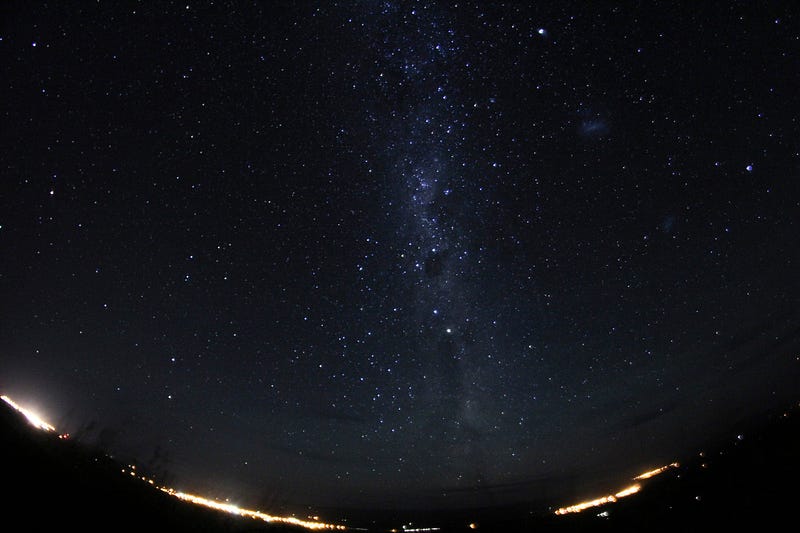
Yes, there are planets, stars bright and dim, and even the Milky Way overhead. But perhaps the most striking thing about the night sky isn’t the presence of these few, dispersed lights, but rather the fact that — at almost every location you can point — the sky itself is dark.
If you think about it for a minute, it doesn’t make a whole lot of sense that this should be the case.
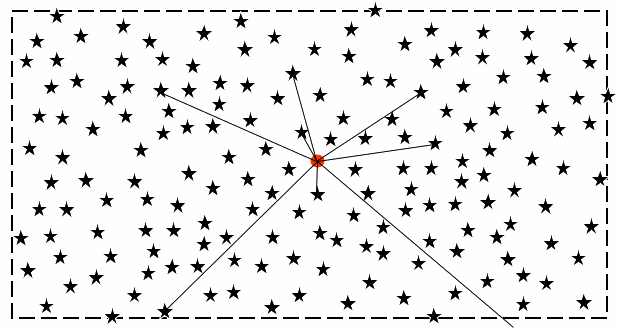
If the Universe were really, truly full of stars — of points of light in all directions — then you’d fully expect that wherever you looked, in any direction, eventually your line-of-sight would run smack into a star.
And once that happened, you wouldn’t see “dark” anywhere you looked. Every point, eventually, would be filled with light, no matter how distant that star, galaxy, or other point of light happened to be.
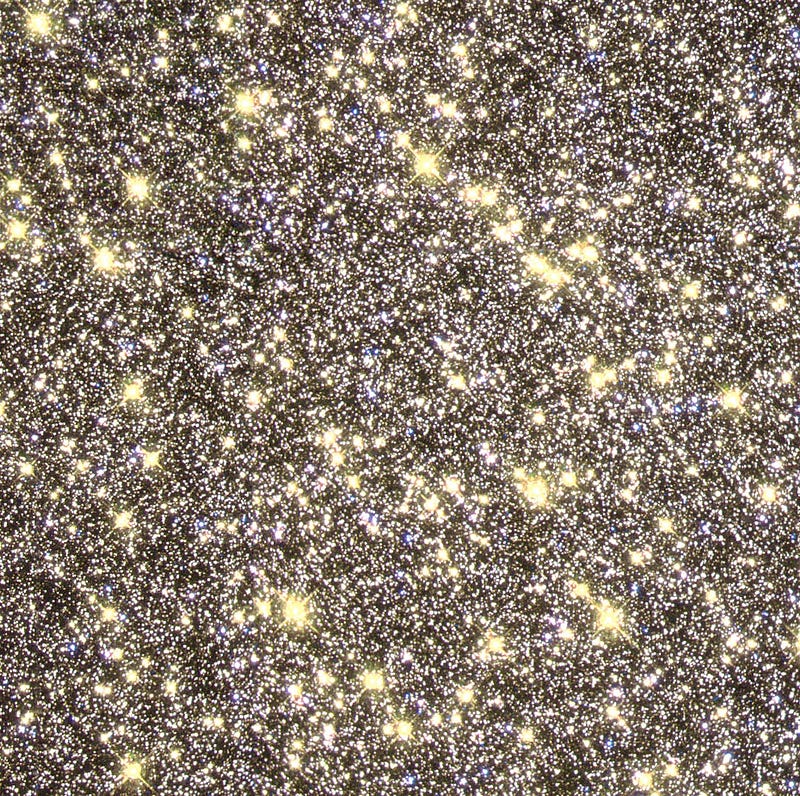
This was one of the great paradoxes of the 19th century: Olbers’ paradox, which showed that the idea of an infinite Universe filled with an infinite number of stars spread out over that space was incompatible with the dark night sky we could all see.
The resolution to this paradox, of course, is that when we look at the distant Universe, we’re actually looking back in time, and since the Universe existed in a hot, dense, more uniform early state, there was a time before which the Universe didn’t contain any stars, since it took time for gravitation to begin collapsing that primordial gas into stars for the very first time. Look out beyond a certain distance, and you won’t ever see even a single star.
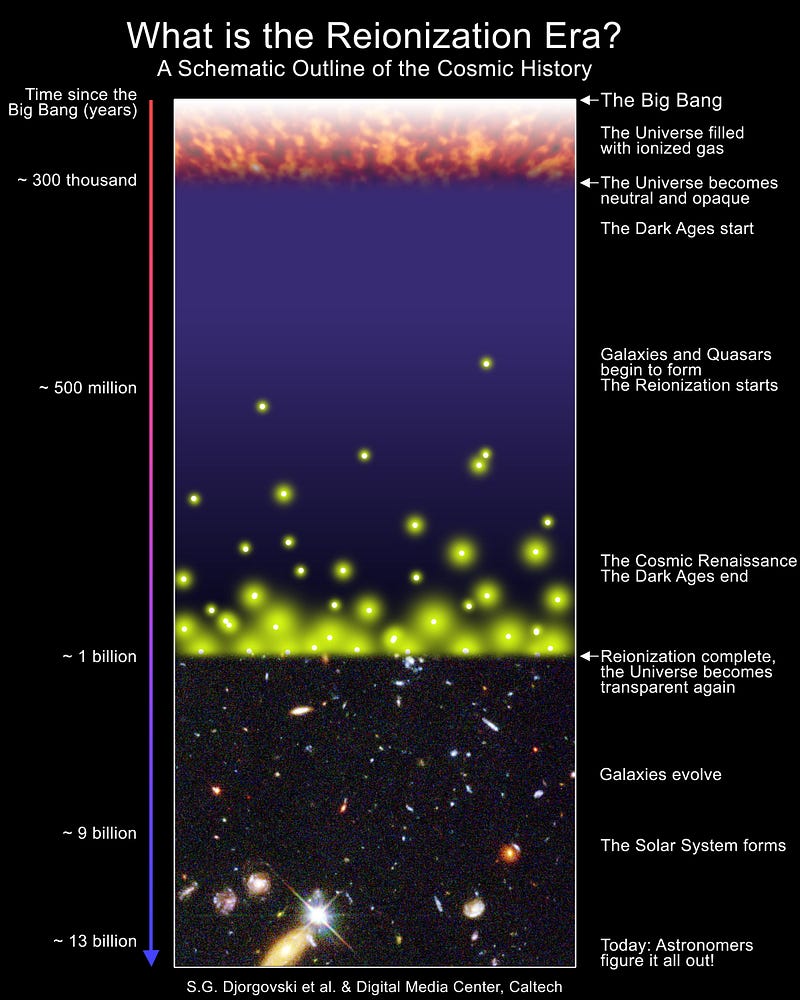
After the Big Bang, the Universe was hot, dense and uniform, but also expanding and cooling. By time the Universe is around 380,000 years old, it’s cooled enough to form neutral atoms for the first time. But there are two barriers to seeing anything:
- There’s nothing to see until we start creating something that emits light.
- Even once you do that, the Universe needs to become transparent.
Although these two problems — the formation of the first stars and the Universe becoming transparent — are often conflated together as “the dark ages,” they’re two separate problems that the Universe needs to solve.
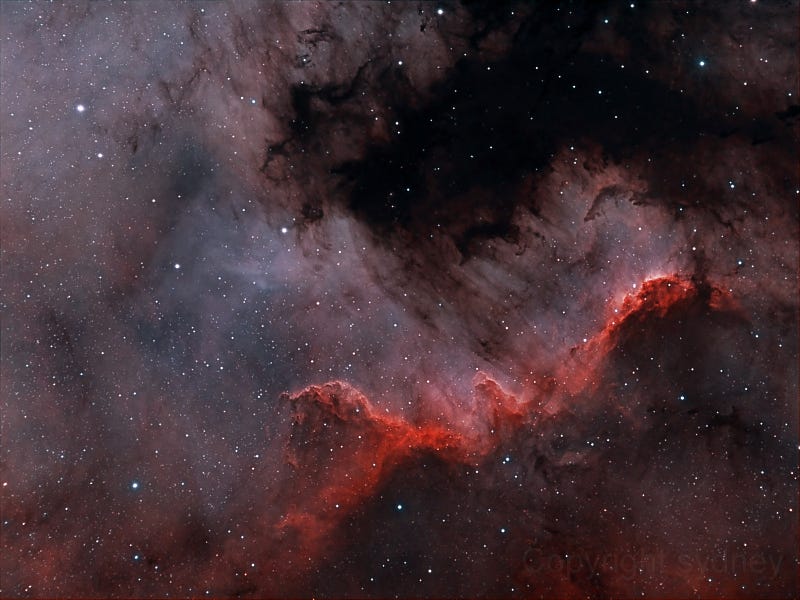
First, you simply don’t have anything to see until you form stars for the first time. While the Universe started off almost perfectly uniform, there are tiny imperfections, including some regions that start off with slightly more matter than average. Over time, gravitation works to pull more and more matter into these overdense regions, growing them into clumps of matter.
It takes tens of millions of years, but after enough time passes, these clumps grow large enough that gravity begins to collapse them under their own gravity. And when the cores of these clumps of atoms and molecules get dense enough, the process of nuclear fusion — burning hydrogen fuel into helium — can finally occur!
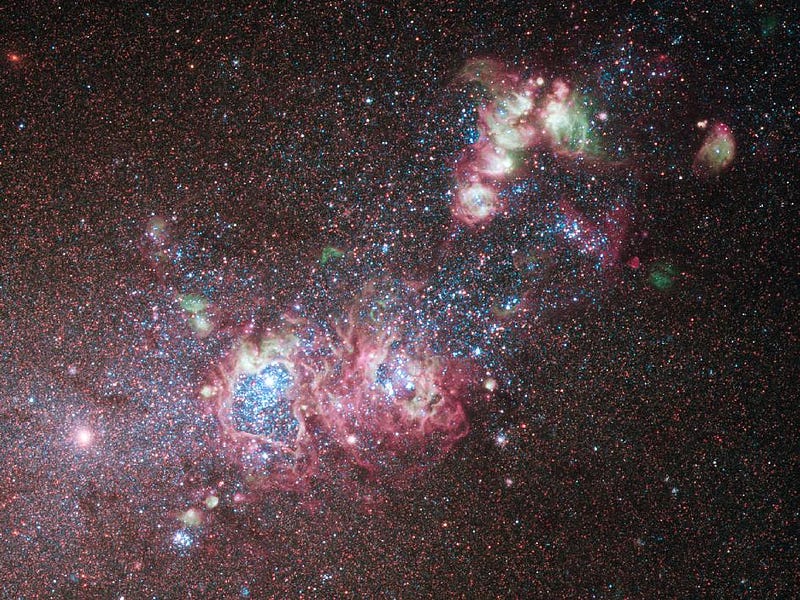
These sites of nuclear fusion become the cores of the very first stars in the Universe, burning hot and bright, and emitting the first visible light the Universe has seen since the early stages of the hot Big Bang.
This happens after as little as 50 million years into the Universe’s history, an incredibly short time to the first stars.
But there’s a problem: none of these stars are actually visible to us!
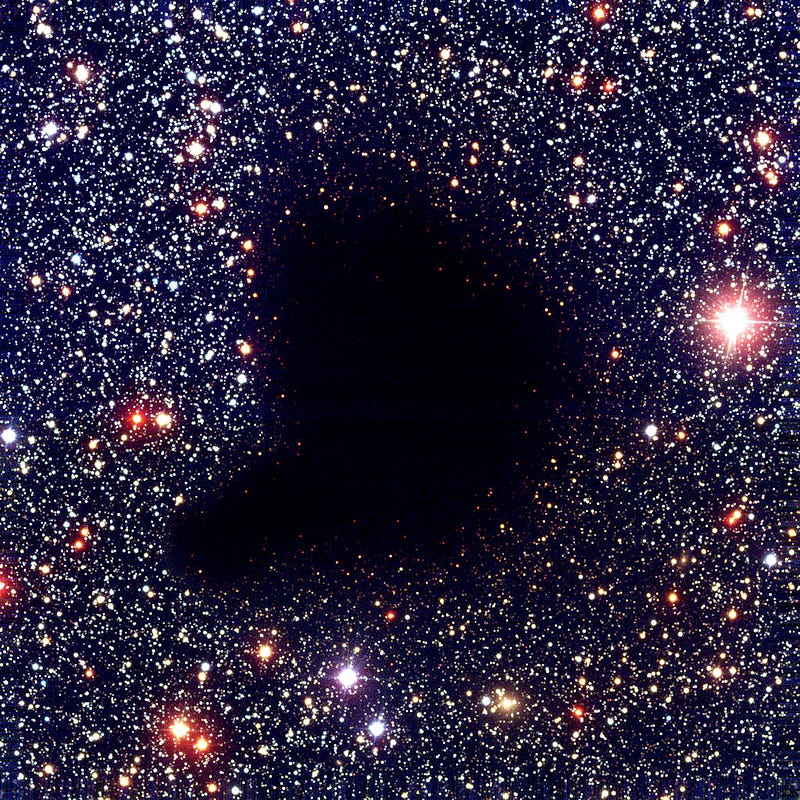
Sure, the stars are emitting light, but so are the stars behind the “dark nebula” above, Barnard 68. This nebula appears so dark because the light from the stars is blocked! Why’s this? Because the atoms and molecules that exist in there are of the right physical size to absorb — and hence appear opaque — to visible light.
While single atoms themselves only have specific atomic transitions they can absorb light at, when they’re bound together in all sorts of intricate configurations, they can actually block the full spectrum of visible light. And this type of opacity is exactly what’s going to happen when the first stars form: the Universe might be creating light, but there’s no way for it to travel to our eyes.
So how do we get out of this?
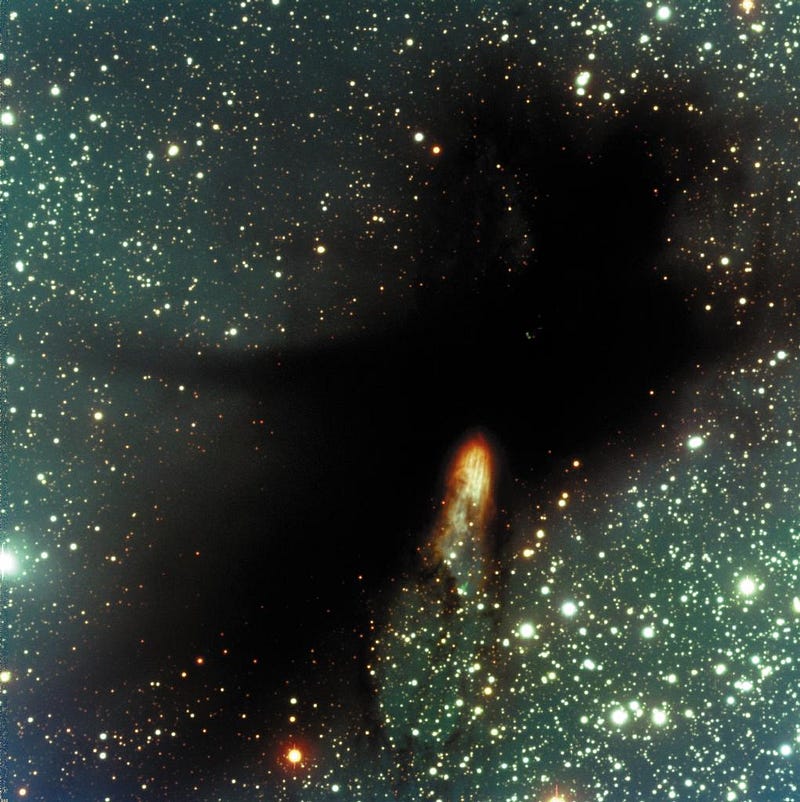
You have to ionize those atoms! Or, more specifically, you have to reionize them, since they were ionized once before: back before they became neutral in the first place.
But this doesn’t happen quickly: this is a process that requires billions upon billions of stars to form, emit ultraviolet, ionizing radiation, and strike more than 99% of the neutral atoms in the Universe. It’s a gradual process, one that takes around 550 million years to complete!
Up until recently, we thought that reionization — this last phase of the Universe becoming transparent to visible light — occurred 450 million years after the Big Bang, but this extra factor of 100 million years was determined by recent observations of the Planck satellite.
But this does not mean, as you might have read recently, that the Universe’s oldest stars formed 100 million years later than we’d previously thought.
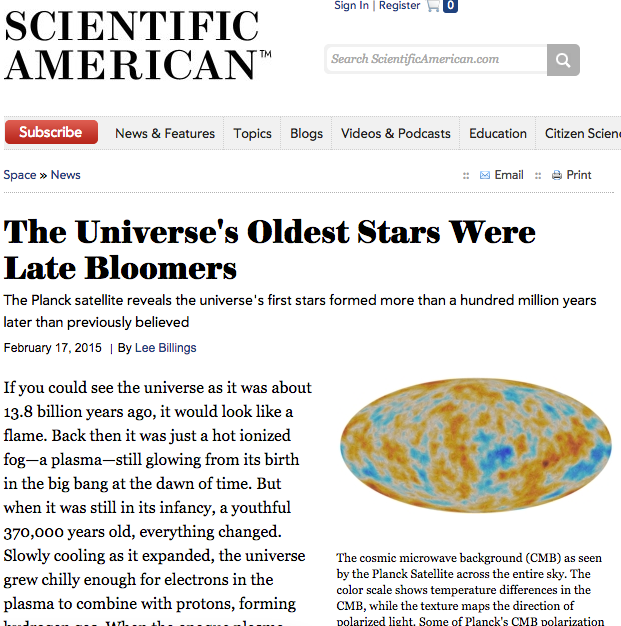
It means that the first stars formed much, much earlier that we’re able to see them, and that we didn’t form enough of these stars — and they didn’t burn hot enough for long enough — to reionize the Universe and make it transparent to light until 100 million years after we had previously thought.
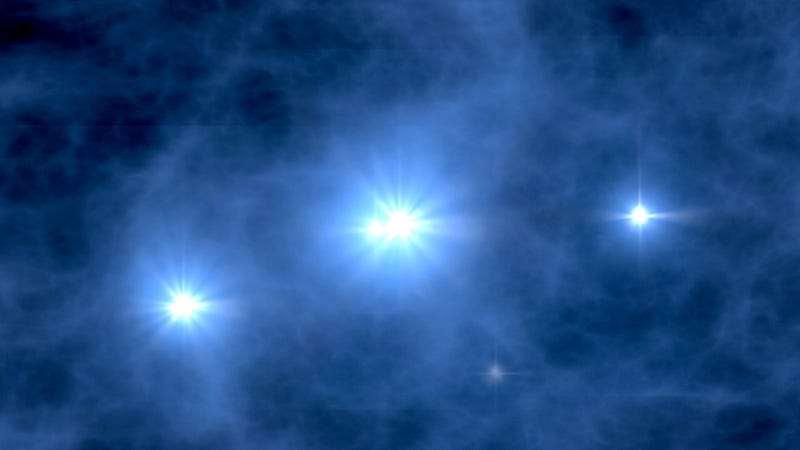
It’s not enough, in the Universe, to simply “let there be light” in order to see the first stars: you need for that light to be able to freely travel through space!
In visible light, there’s no way to see them: no matter how good the Hubble Space Telescope ever is, no matter how long it stares at these patches of sky, it will never see back to the first stars, because the Universe is still opaque to visible light.
But there is hope, and the James Webb Space Telescope has the potential to bring that hope to reality.
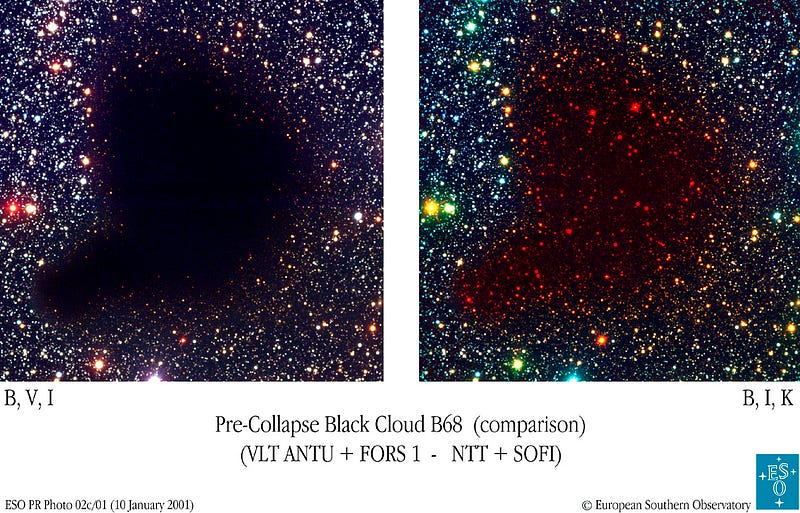
By looking in longer wavelengths of light, those dusty configurations of atoms and molecules might actually be transparent to those wavelengths. Even though Hubble might not be able to see those stars, James Webb, which will view infrared (and quite long infrared) wavelengths, will be able to see all the way out to epochs where the Universe was opaque to visible light.
In other words, in just a few years, we may truly be able to probe the first stars in the Universe, not merely hundreds of millions of years after the fact, when the Universe becomes transparent to visible light. The first stars in the Universe may be invisible for a time, but that’s a fault of our eyes, not a fault of the light!
Leave your comments at the Starts With A Bang forum on Scienceblogs!





